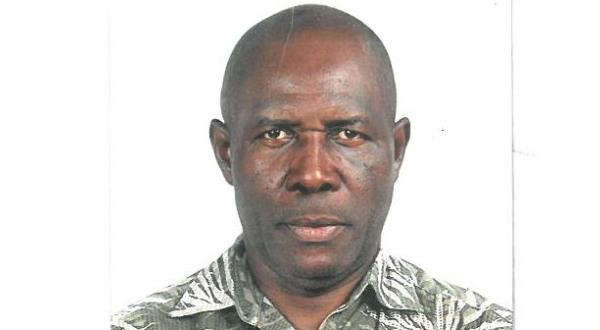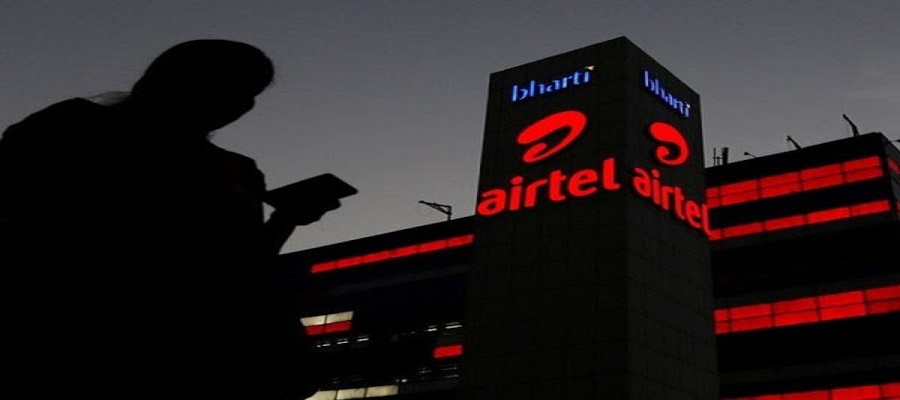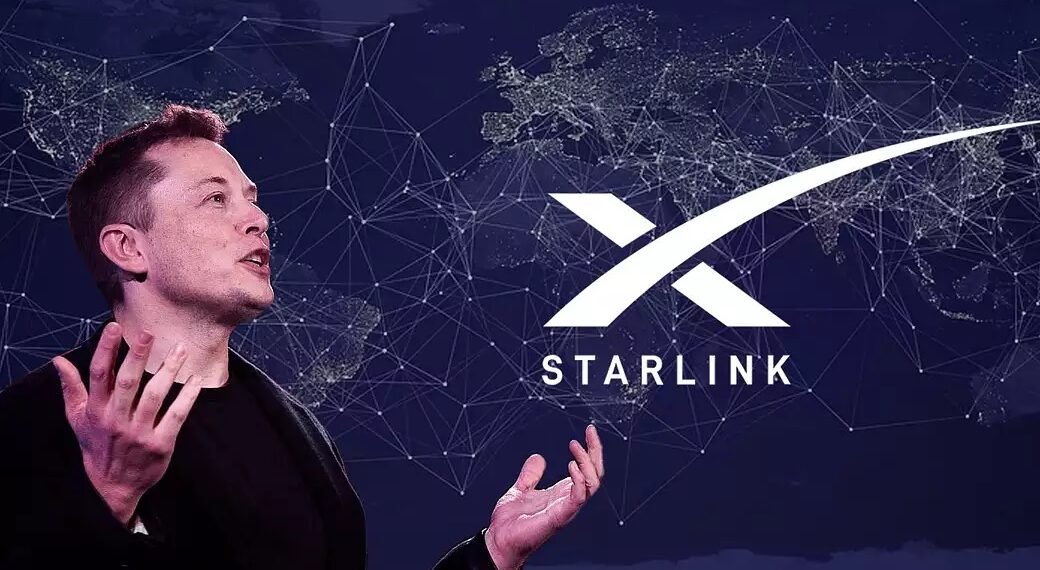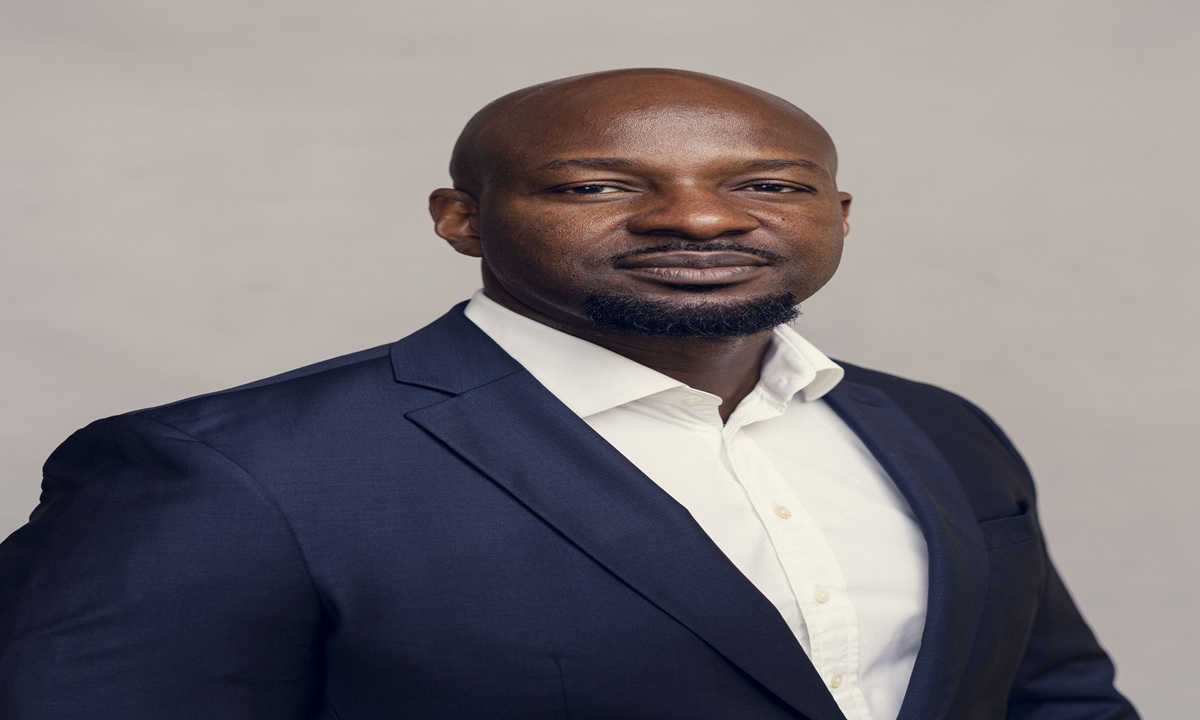Telecom
SATCON and National Security: A New Strategic Partnership is Required in Nigeria (1 of 3)

By Andrew Aroh
Nigeria is preparing to cope with a wide range of threats by terrorists, as well as manmade or natural disasters.
- Now, more that ever Satellite technology is an important element in the nation’s domestic security and its various emergency response systems.

Andrew Aroh
- Our reference case is the United States of America that have emergency communications coordinators In several states, as well as officials in both the office of National Security and the Federal Emergency Management Agency(FEMA) – the equivalent of Nigeria’s National Emergency Management Agency (NEMA).
- Satellite is a key component of FEMA’s comprehensive consequent management strategy.
- The following offices are vital for a broader implementation of satellite solutions:
- Office of National preparedness
- Preparedness and response bureau
- Systems Engineering division
- Communications and warning
- When everything is collapsed or fragmented on the scene, Satellite can quickly rise to the occasion, reinforcing and enhancing any incident command structure. FEMA and NEMA know this for years, as they are big users of Satellite as it should be.
- For example, when the circuits at FEMA’s regional office in New York City were knocked out on September 11 2001, FEMA immediately activated it’s Ku-band and MSAT Satellite systems. They were able to get that office up and running just in time.
- FEMA has a fleet of large truck trailers known as the Mobile Airborne Transportable Telecom Systems (MATTS) as well as smaller Mobile Emergency Response Systems (MERS). Both are VSAT-equipped.
- FEMA also routinely uses handheld devices linked to Orbcomm (Little LEO) in order to update assignments for FEMA personnel in the field.
- Recently, FEMA has started tapping on lower cost Ka-band terminals for a variety of purposes.
- Given what Satellite can do in times of dire need, several large states have sophisticated Satellite infrastructure at their disposal.
- At the Florida Division of Emergency Management (DEM), the Emergency Satellite communications system (ESATCOM) consists of 109 remote terminals statewide for high-speed data, voice, internet access and e-mail between the Emergency/Operations center and any remote site.
- Remote terminals are available in several mobile command posts and on three dedicated trailers to permit communications directly from affected areas.
- Any remote site can contact the State Emergency Operations Center (EOC), via voice or a special e-mail system, to:
- Request assistance
- Provide emergency information
- Offer emergency assistance
- Remote sites ac access the communications and warning Division’s database on any entry to:
- Originate
- Edit
- Review
- Conduct status checks
- Any remote site can participate in a one-way video broadcast or two-way video conference, and can access up to 48 telephone lines if their local system has failed.
- ESATCOM is used not only in day-to-day operations. It also serves as a backbone to activate any or all of the state’s radio and television stations with emergency information.
- The Emergency operations center (EOC) also processes severe weather information from NOAA/NWS Satellites, and from private firms for analysis and evaluation.
- All weather watch and warning conditions are relayed to the appropriate counties via Satellite.
- In California, the Governor Office of Emergency Services (OES) has access to 68 remote sites, two hubs and five transportable known as Operational area Satellite Information System (OASIS) trailers, as well as additional three trailers as a spare for the Telecommunications section.
- The biggest challenge so far is getting people so familiar with the satellite network that using it becomes second nature.
- Like any technology, if you have been trained to use it, but never needed to, you are less likely to remember how, especially in an emergency when tensions are high.
- OES provides the public with emergency information via an Emergency Digital Information Services(EDIS).
- OASIS serves as its backbone delivery system to all counties (local governments) in California.
- OES uses 1.2meter VSATs so that local emergency managers can direct emergency newswire feeds to local broadcasters.
- The EDIS bulletins are a supplement to the Emergency Alert System (EAS) in California.
- In addition to the OASIS, OES uses the mobile Satellite Ventures (MSV) Sat phones for all it’s field coordinators.
- The Sat phones affords them the flexibility to communicate anywhere in North America back to the State warning center sacrament to using either the custom talk group on PTT(push to talk) or cellular like telephone. Pennsylvania is yet another State where Satellite plays a key role.
- For example, with an uplink vehicle, a phone flying overhead can feed live video down to the truck, which can then uplink that same signal via Satellite back directly to the governor of Pennsylvania and his emergency management team faraway
- As for the 40-plus federal agencies that come under the oversight umbrella of the office of National Security the list of Satellite assets is enormous. These includes:
- The domestic Satellite resources of the Defense Department (DOD) via the Defense Information System Agency (DISA).
- Assets now in place under the formed Northern command.
- At the State level, there are:
- Civilian support teams (CSTs) which are now in all the states
- Various Army National Guard Units
- Combat Communications squadrons in the Air National Guard
- Others
- They all have considerable Satellite resources at their disposal including:
- UHF SATCOM (TAC-SAT/UNET)
- Ground Mobile Forces Satellite Radio, which can provide both secure and open phone links as well as access to NIPRNET (open internet) and SIPRNET (secure internet).
- Multiple radio band and combat net radio interfaces.
- How exactly these military units will mesh with their civilian counterparts, as well as how the different civilian agencies will mesh together in a seamless fashion need to be resolved.
- Interoperability is a key issue we need to look at this deeply. It is clear that we want to fix it fast within the local environment, starting with local police, fire department as well as flood division.
OBSERVATIONS
- So far, we have not seen a large value adds for some sort of single homogenous network. This should integrate local decision-makers.
- Because the National Security block grants to State have few strings attached, it is possible that States might use the funds to purchase Satellite equipment under the directive of NEMA
- Where exactly is the office of National Security heading when it comes to communications oversight and any coordination of Satellite communications? This remains to be seen.
- The coming budget signals that the government wants NEMA to quickly streamline and simplify any and all resources acquisition procedures for the States.
- Making interoperable Communication gear available – including Satellite gear – need to be a high priority.
- Limited state budgets in many instance simply do not allow for any widespread implementation of Satellite technology.
- So, will the threat of terrorist attack and recent signs of natural disasters in the country alter this situation?
- Will an office of Emergency Satellite Communication be created?
- Or will the existing set of plans overseen as part of the National Communication System (NCS) suffice?
- If the president’s National Security Telecommunications Advisory committee is formulating anything resembling a Satellite specific agenda, we have yet to detect it.
- A lot of arrows are pointing in the direction of a more integrated approach to emergency satcom.
- Avoiding any unnecessary and burdensome expansion of infrastructure is a priority as well.
- The real objective is meeting the critical communications needs of the end users, weather we are talking about:
- First responders
- Emergency management coordinators
- The general public
- Emergency Satcom is not an exotic solution. It should be available for instantaneous use in every state.
- Commercial space capabilities are increasingly important to the ability of Nigeria to achieve its national security objectives.
- Consequently, fostering commercial space will shift from a secondary consideration concerned with the economic health of the nation, to a necessary strategy for achieving military and intelligence mission objectives.
- This will lead to new programs and policies aimed at ensuring commercial capabilities are available in the future for emergency/military operations as required.
Andrew Aroh is President SSPI Nigeria
Telecom
Airtel AI Blocks 84 Percent of Spam SMS in Nigeria

Nigeria has recorded an 84 Percent decline in spam SMS after Airtel Africa deployed its Artificial Intelligence-powered spam detection tool, Spam Alert.

According to Airtel, the free service has flagged over 205 million fraudulent and unsolicited messages across 13 African markets within six months.
Nigeria registered the sharpest decline, while Kenya recorded the highest flagged spam volume with 68 million messages, followed by Tanzania with 47 million and Zambia with 33 million.
Spam Alert prefixes suspicious SMS with “SPAM Alert,” providing users with real-time protection against phishing scams and nuisance texts without requiring extra applications.
Sunil Taldar, CEO, Airtel Africa, said the solution demonstrates the company’s commitment to tackling digital fraud as smartphone penetration expands across Africa.
Currently active in 13 of Airtel’s 14 markets, including Nigeria, Uganda, Zambia, and Tanzania, the service has cut overall spam SMS by 12% across the continent. Seychelles will join soon, Airtel confirmed.
In Nigeria, Airtel reported that between March 13 and May 20, 2025, the system intercepted more than 9.6 million suspicious messages, of which over 9.1 million originated from off-network sources. T
he AI-powered system scans all SMS in real-time using 250 parameters, including sender identity, link structure, and regional anomalies, processing each message in under two milliseconds without storing content.
The Nigerian Communications Commission (NCC) welcomed the innovation.
Dr. Aminu Maida, executive vice chairman, said the initiative strengthens consumer protection at a time when spam and fraud are growing more sophisticated. He stressed the need for more collaboration between operators and regulators to reduce digital risks.
The NCC’s 2023 Industry Risk Report had ranked phishing and bulk unsolicited messaging among the top threats facing subscribers, especially in rural areas and among first-time smartphone users.
Airtel’s initiative is expected to ease these concerns by reinforcing trust in mobile communications.
General News
Why Elon Musk Halted Sales of Starlink in Lagos, Abuja

Starlink, the satellite internet provider operated by Elon Musk’s SpaceX, has stopped taking new orders for residential kits in parts of Lagos and in Abuja after network capacity was reached, the company’s online ordering page shows.

Neighborhoods listed as sold out include Victoria Island, Ikoyi, Lagos Island and Surulere.
Prospective customers in those areas can join a wait list by paying a deposit and will be notified when service space opens.
At Chevyville Estate in Lekki, one resident trying to subscribe was met with a message that read: “Starlink service is currently at capacity in your area. However, you can place a deposit now to reserve your spot on the waitlist and receive a notification as soon as service becomes available again.”
That experience mirrors what consumers in other busy districts are seeing.
A Starlink engineer who spoke on condition of anonymity to discuss internal limits said the company temporarily closes new sales in zones where adding customers would degrade service for existing users.
“It happens when the area cannot take a new customer due to its designed capacity at the time,” the engineer said.
“This also helps preserve a steady connection for people already online.” Remedies can include adding more ground infrastructure, securing regulatory clearances, or expanding satellite coverage.
Since entering Nigeria, Starlink’s monthly fee has climbed: the service began at about N38,000 (roughly $25), rose to about N45,000 ($30) and — by 2025 — was charging roughly N56,000 ($37).
Starlink has cited naira depreciation, higher operating expenses and costs tied to meeting rules set by the Nigerian Communications Commission for the increases.
Those higher prices, and the service interruptions, appear to have affected subscription numbers. After a near eight-month pause that began in November 2024 and was tied to limited bandwidth and regulatory issues, orders resumed in late June 2025.
Still, data from the NCC show active Starlink users in Nigeria fell from 65,564 in the fourth quarter of 2024 to 59,509 in the first quarter of 2025, a decline of more than 6,000 users, or about 9 percent.
Analysts point to the price rises, service holds and economic pressure as key reasons for the drop; some customers have switched to cheaper alternatives or stopped service.
As Elon Musk maintains his position as the world’s richest individual, with a net worth of $429 billion (according to the Bloomberg Billionaires Index), his commitment to global digital inclusion through Starlink remains a central focus.
Starlink’s activity in Nigeria is part of a wider push across Africa.
The company has recently moved to enter markets including Lesotho and Somalia and secured permission to operate in the Democratic Republic of Congo after earlier restrictions,
SpaceX is also working with operators such as Airtel Africa to reach rural areas where wired internet is scarce.
For many users in Nigeria, the appeal of Starlink remains clear: a reliable option where terrestrial networks falter.
But until the company expands capacity or adjusts pricing, consumers in dense urban pockets may have to wait for access or turn to other providers.
Credit excluding Headline: Pm News
Telecom
Google Expands Digital Infrastructure with Four New Subsea Cable Hubs and $9m AI Fund for Africa

Google has announced a new set of investments in Africa, reaffirming its nearly two-decade commitment to the continent’s digital transformation.

The latest commitments focus on empowering Africa’s next generation through AI, unlocking opportunities and expanding on the innovation capacity of young Africans. They cover internet connectivity; youth-led learning and innovation; and skills training.
Connectivity
Google is announcing four strategic subsea cable connectivity hubs in the north, south, east and west regions of Africa. This investment creates new digital corridors within Africa and between Africa and the rest of the world – ultimately deepening international connectivity and resilience, as well as spurring economic growth and opportunity.
This is the latest addition to Google’s Africa Connect infrastructure program, which sees the company build vital connectivity across the continent: including the Google Cloud region in Johannesburg serving users across the continent, the Equiano cable running along the entire western seaboard of the continent, and Umoja, the first fiber optic route to directly connect Africa with Australia (running through Kenya, Uganda, Rwanda, Democratic Republic of the Congo, Zambia, Zimbabwe and South Africa).
Google’s investments to date have enabled 100 million Africans to access the internet for the first time, and the Equiano cable alone is expected to increase real GDP this year in Nigeria, South Africa and Namibia by an estimated $11.1 billion, $5.8 billion and $290 million, respectively.
Youth-led learning and innovation
Enabling Africa’s young people to learn, innovate and lead is critical to Africa’s development and economic growth. That’s why Google is today also announcing free one-year subscriptions to Google AI Pro plan for college students (18 or older) across the continent – starting with Egypt, Ghana, Kenya, Morocco, Nigeria, South Africa, Rwanda and Zimbabwe. The subscription provides advanced AI to students – from Deep Research, which helps save time with custom research reports and in-depth information from hundreds of sources across the web, to Gemini 2.5 Pro, which provides help with assignments or writing.
Building skills and solutions
Equipping people with AI skills is critical. To date, Google has trained 7 million Africans and plans to train an additional 3 million students, young people, and teachers by 2030. Google is also bolstering local capacity by providing African universities and research institutions with over $17 million in funding, curriculum, training and compute and access to advanced AI models over the past four years – with an additional $9 million planned for the coming year.
On the announcements, Alex Okosi, Managing Director for Google in Africa, said: “Africa’s digital economy holds immense potential, and it will be driven by the talent and ingenuity of its next generation. Today’s announcements, spanning AI education, advanced tools for students, and expanded connectivity, are a unified investment into the upward trajectory of the continent.
“We are committed to providing the foundational infrastructure, the cutting-edge tools, and the financial support necessary for Africa’s youth to innovate, lead, and build a thriving digital world.”
Google’s long term partnership
These announcements are the latest chapter in Google’s long-term investment in the continent, which has delivered on $1 billion of investment. Google’s sustained commitment to Africa has included driving connectivity; training more than 7 million people across the continent in digital skills to support the future workforce; and supporting 153 startups from 17 African nations through the Google for Startups Accelerator Africa, helping them raise $300 million and create 3,500 jobs.
AI creates an unprecedented opportunity to benefit everyone, and Google is committed to making that a reality for people, businesses and communities across Africa. Today’s announcements are another example of how Google is continuing to expand connectivity, increase product access and skills across the continent and enable African-led innovation – with more to come.

 E-Financial2 days ago
E-Financial2 days agoFCMB Partners Truecaller to Reinforce Customer Communication, Trust

 News2 days ago
News2 days agoAfDB Approves Equity Investment in The Currency Exchange Fund to Support Access to Local Currency Financing Across Africa

 E-Financial2 days ago
E-Financial2 days agoDon’t Spray, Mutilate Naira – CBN

 Broadcasting2 days ago
Broadcasting2 days agoGlo-sponsored African Voices Features Star Author, Chimamanda Adichie

 General News2 days ago
General News2 days agoWhy Elon Musk Halted Sales of Starlink in Lagos, Abuja

 News2 days ago
News2 days agoShoprite Struggles to Stay Afloat as Stores Shut across Nigeria

 Telecom2 days ago
Telecom2 days agoGoogle Expands Digital Infrastructure with Four New Subsea Cable Hubs and $9m AI Fund for Africa

 E-Business2 days ago
E-Business2 days agoFG Plans to Make 95 Percent of Nigerians Digitally Literate by 2030

















